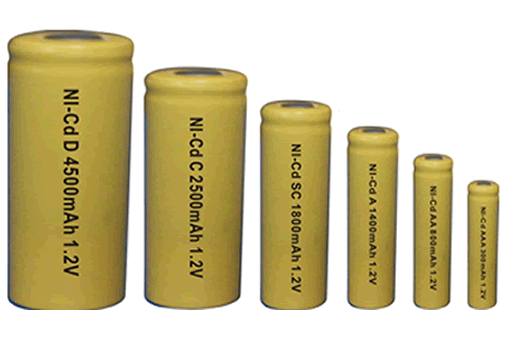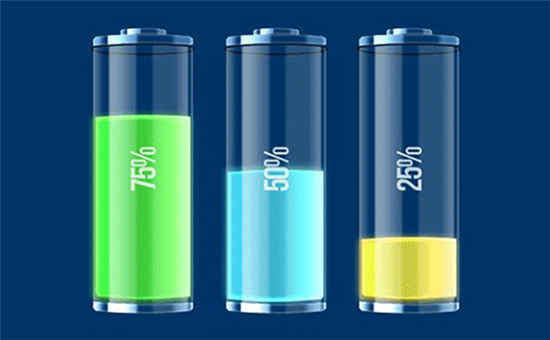Differences between lithium-ion and lithium polymer batteries
Aug 30, 2019 Pageview:2424
Lithium-ion batteries; these are batteries that can be used and recharged after its power is used. They are portable enough to handle most common in almost all portable electronics. New frontiers for their application are springing in the car andspecial industries. It was developed in the 1980s by Akira Yoshino, John Goodenough, Rachidyazami based on the concept proposed by M.stanley Whittington. Companies like Sony and Asashi Kasei first attempted economic realization. It was specifically chosen as a choice for most devices due to its ability to retain charge for longer hours; it discharges slowly and has a high energy density.
Lithium-ion batteries are commonly found as they are used as batteries in our mobile phones, laptops, and other electronic devices. They are usually marked LI-ion or LIB on the surface of the batteries. Lithium-ion uses intercalated (inserted) lithium compounds as electrodes separated by sheets of materials.
Lithium polymer Battery; they are rechargeable batteries using polymer electrolyte instead of a liquid electrolyte. The electrolyte is highly conductive jellylike polymers. Lithium batteries are used in places where weight is a critical factor, e.g. radio-controlled aircraft and other mobile devices like a handheld computer due to their specific energy. They have marked LiPo, liP, Lipoly; lithium-poly on their surfaces.
Tabular differences between the batteries
LITHIUM-ION (LI-ion) lithium polymer (li-poly)
1) They have higher energy density they have a specific energy density
2) They cost less to manufacture (cheap) they quite expensive to produce or manufacture
3) They are not sleek and thing as li-poly battery they are sleek and thinner
4) They are highly flammable and could explode they are not as flammable as a lithium-ion battery.
Is Lithium polymer battery better than a lithium-ion battery?
On a mere glance at these two contrasting capacitors (Battery), one could hardly tell which is better and which is not. Their better one to tell is in its applicability and usage coupled with its flexibility in use. Both lithium-ion and lithium polymer batteries have their advantages in specific use where the other will not. Seeing some of these characteristics will give us an understanding of which is better in use in a specific application.
Lithium-ion is better in used for mobile devices like phones, laptops, music players or MP3s. This is because they are cheap in production which when coupled with these devices will significantly put prices of these devices at affordability unlike lithium polymer battery, which may cause devices off the purchase of the common man.
With a higher energy density, a lithium-ion battery will score high in its ability not to discharge quickly when recharged to a lithium polymer battery having only a specific energy capacity and quickly drains when used.
The sleek designs of lithium polymer battery make then fit more in critical technologies like drones; with it less bio hazardous nature allows it to finds its use in biotechnology and engineering. In these respect, a lithium-ion battery is not just hazardous but also fatal in incidence that usually arises from them like fire or explosion.
How long lithium polymer and lithium-ion battery do last?
Usually most manufacturing ratings on the lifespan of a lithium-ion battery, the last two to three years even though they are left unused a long time. Therefore it is necessary that we check for the manufacturer's date when buying to replace our old ones, so as we don't buy a new but almost dead battery if not dead already before putting to meaningful use.
Lithium polymer battery life spans as you use the battery, charging and discharging it, the capacity will slowly drop. Therefore if your battery if 2300mAh incapacity, it might drop 75% of that at (about 2000mAh) after 200 charges per discharge cycles. Lithium polymer battery may last 300 to 500 cycles depending on how it is cared for.
How to use lithium polymer and lithium-ion battery in different devices
Given they various characteristic posing advantages as well as disadvantages, there Is need to know just how properly to use these batteries in devices of various kinds.
Lithium polymer batteries are a tremendous advance technology for RC use. Due to the chemistry of lithium cells, there is a possibility of fire if charging I not done properly. It is unavoidable given the nature of lithium itself. Though dangerous, it can be safely used by adhering to simple rules and precautions.
While charging, batteries should not be left unattended to
One must be sure, and absolutely, he/she must ensure that the lithium polymer charger settings are correct for batteries to pack being charged. Both voltage and current setting
Properly charging a lithium polymer charger; the most common way to damage a lithium polymer battery is overcharging it. Overcharging a battery can cause it to swell. Swollen batteries can go in flames and explode. The battery chemicals can come out of solution and cause the battery to be short when you attempt to charge it again.
Most devices come with proprietary battery shape and connectors. Use only the charges designated for you devise battery. If you buy an aftermarket charger, be sure to read your devices manual to ensure that your charger has a proper safety mechanism to ensure you never overcharge.
Avoid dropping or crushing you lithium-polymer battery; lithium polymer is fragile and very fragile. So fragile they are that simply dropping them on the floor can damage a cell and the chemicals within the battery to react uncontrollably.
Although in using lithium-ion batteries, more caution needs are taken;
Keep the batteries at room temperature; it means between 20 and 25 degrees c. Heat is by far the largest factor when it comes to reducing lithium-ion battery life.
Avoid completely discharging lithium-ion batteries; if a lithium-ion battery is discharged below 2.5 volts per cell, a safety circuit built into the battery opens, and the battery appears dead.
There is a need to avoid charging new batteries for 12 hours, as recommended by sellers. Lithium batteries, due to their low discharge rate when not used, are pre-charged by the manufacturers before distribution.
Leave Message
Hottest Categories
-
Hottest Industry News
-
Latest Industry News











